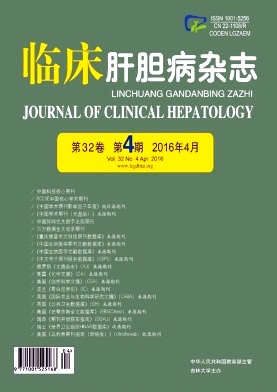|
[1]ZHENG ZL,HUANG CH,MEI CY,et al.Current advance on the research of cordyceps militaris[J].J Environ Entomol,2011,33(2):225-233.(in Chinese)郑壮丽,黄春花,梅彩英,等.蛹虫草国内外研究的新进展[J].环境昆虫学报,2011,33(2):225-233.
|
|
[2]LIU GJ,ZHOU SJ,YANG SL,et al.Research process of cordycepin in cordyceps militaris[J].Food Sci,2013,34(21):408-413.(in Chinese)刘桂君,周思静,杨素玲,等.蛹虫草中虫草素的研究进展[J].食品科学,2013,34(21):408-413.
|
|
[3]NIE LH,SUN SY,WU ZY,et al.Systematic evaluation on jinshuibao capsule for chronic renal failure[J].Chin J Exp Med Formul,2012,18(11):5-9.(in Chinese)聂玲辉,孙升云,吴志勇,等.金水宝胶囊治疗慢性肾功能衰竭的系统评价[J].中国实验方剂学杂志,2012,18(11):5-9.
|
|
[4]HUANG YL.Effects of Jinshuibao capsule on immunoglobulin and pulmonary function in patients with chronic obstructive pulmonary disease[J].J Emerg Tradit Chin Med,2009,18(10):1589,1605.(in Chinese)黄燕玲.金水宝胶囊对慢性阻塞性肺疾病免疫球蛋白及肺功能的影响[J].中国中医急症,2009,18(10):1589,1605.
|
|
[5]OUYANG YY,ZHANG Z,CAO YR,et al.Effects of cordyceps acid and cordycepin on the inflammatory and fibrogenic response hepatic stellate cells[J].Chin J Hepatol,2013,21(4):275-278.(in Chinese)欧阳阳阳,张哲,曹忆嵘,等.虫草酸和虫草素对肝星状细胞炎症及纤维化发生特性的影响[J].中华肝脏病杂志,2013,21(4):275-278.
|
|
[6]ZHANG N.Cordyceps militaris polypeptide enhance the chemosensitivity of gastric cancer ceil line SGC-7901 on 5-fluorouracil through PI3K/Akt/mT OR pathway[D].Changchun:Jilin Univ,2014.(in Chinese)张楠.蛹虫草多肽通过PI3K/Akt/mT OR通路增强胃癌细胞株SGC-7901对氟尿嘧啶化疗敏感性的研究[D].长春:吉林大学,2014.
|
|
[7]ZHAO M,CHI LP,WANG FY,et al.Establishment of mice acute liver injury model induced by alcohol and its application[J].South China J Prev Med,2005,31(1):14-17.(in Chinese)赵敏,池莉平,王凤岩,等.小鼠急性酒精性肝损伤模型的建立及应用[J].华南预防医学,2005,31(1):14-17.
|
|
[8]SUSSMAN S,DENT CW,SKARA S,et al.Alcoholic liver disease(ALD):a new domain for prevention effort[J].Subst Use Missue,2002,37(14):1887-1904.
|
|
[9]LI YM.The epidemiology and natural history of alcoholic liver diseases[J].Chin J Hepatol,2010,18(3):171-172.(in Chinese)厉有名.酒精性肝病的流行病学及自然史[J].中华肝脏病杂志,2010,18(3):171-172.
|
|
[10]SALMAN N,MUHAMMAD SK,JAVID F,et al.Cirrhosis and its complications:evidence based treatment[J].World J Gastroenterol,2014,20(18):5442-5460.
|
|
[11]EID N,ITO Y,MAEMURA K,et al.Elevated autophagic sequestration of mitochondria and lipid droplets in steatotic hepatocytes of chronic ethanol-treated rats:an immunohistochemical and electron microscopic study[J].J Mol Histol,2013,44(3):311-326.
|
|
[12]LI AH,ZHAO G.Rrearch advances in the pathogenesis of alcoholic liver disease[J].Jilin Med J,2010,31(17):2670-2672.(in Chinese)李爱华,赵刚.酒精性肝病发病机制的研究进展[J].吉林医学,2010,31(17):2670-2672.
|
|
[13]ZHENG JL,QI H,HUANG ZQ,et al.Determination of antioxidant activity of mycelium fermentation broth and sporocarp from northern caterpillar fungus(cordyceps militaris)[J].J Microbiol,2012,32(6):93-95.(in Chinese)郑剑玲,齐贺,黄竹青,等.北虫草菌丝发酵液和子实体抗氧化活性测定[J].微生物学杂志,2012,32(6):93-95.
|













 DownLoad:
DownLoad: